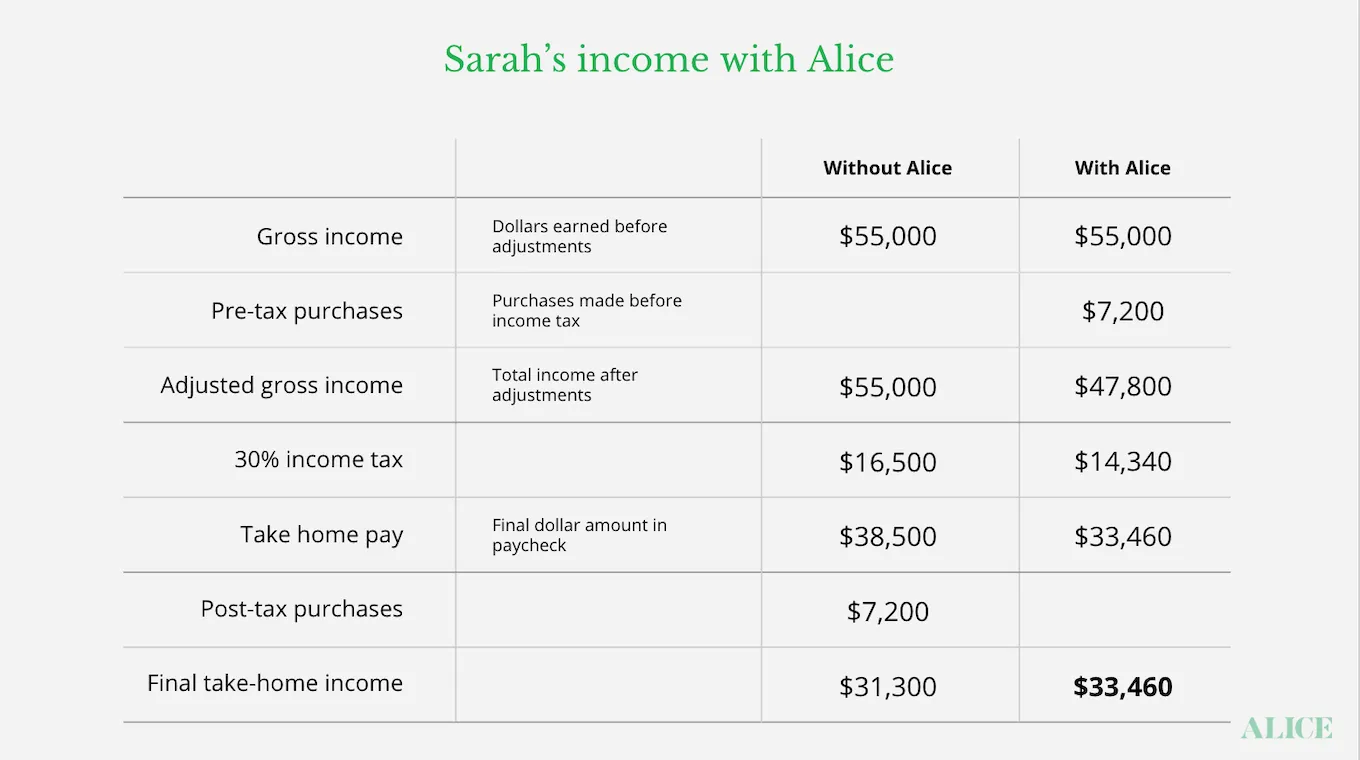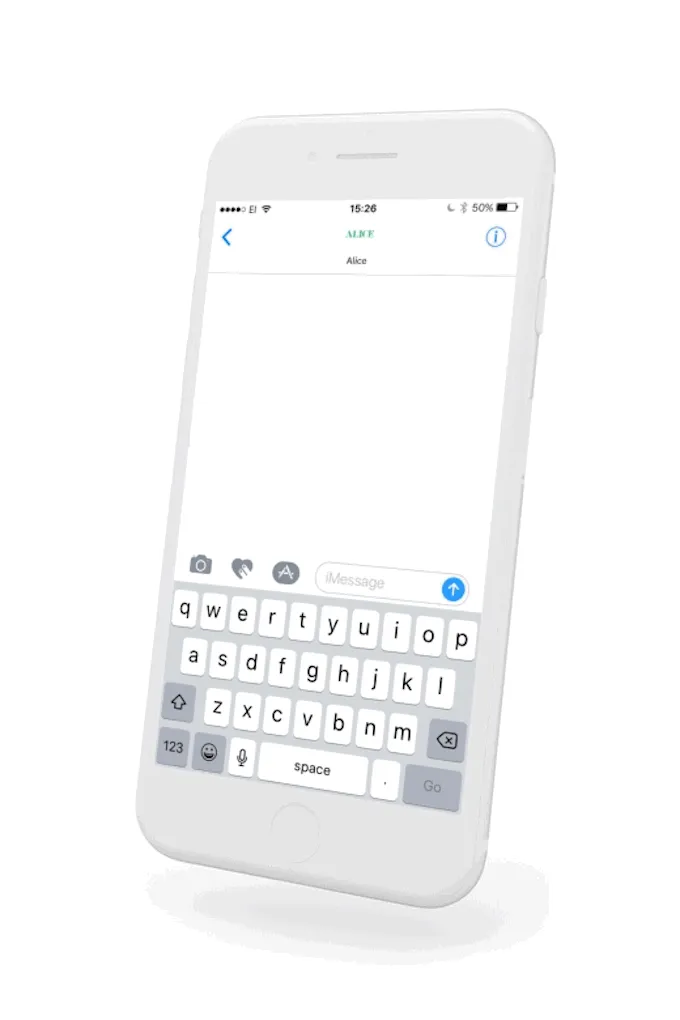Table of contents
There isn’t a single small business owner or employee who wants to deal with more forms, more math, or more acronyms. Yet since it’s been around, that’s exactly what pretax spending has been: mountains of paperwork, guesstimating for the unpredictable, and a confusing alphabet soup of letters and numbers.
As a result, enrollment rates for these benefits have been pretty meh—especially amongst hourly workers. They’ve been so meh that most small businesses don’t even bother providing them. And that’s a 😢 shame.
Why is it a 😢 shame? Because pretax spending does two amazing things: It helps employees keep more of what they earn while simultaneously reducing the amount employers pay in payroll taxes.
The problem all along has been that it’s hard to understand and even harder to use.
So let’s fix that. Let’s get a plain-language understanding of what pretax spending is, how it works, why it makes so much sense, and how it’s been made a whole lot easier—especially for businesses using Square Payroll.
What is pretax spending?
Think of pretax spending as little tax returns in your employees’ paychecks that they can’t get at tax time.
Pretax spending functions a lot like the traditional benefits we’re all familiar with, namely health insurance, dental insurance, vision insurance, and even retirement benefits like 401(k)s. Eligible pretax expenses are taken out of an employee’s paycheck before their paycheck is taxed, thus reducing their taxable income. That means employees pay less in income taxes and employers pay less in payroll taxes.
But in addition to health, dental, and vision insurance, there are other pretax benefits that address employee spending on everyday things like subway passes, contact lenses, copays, prescriptions, daycare, and summer camp. Basically, if an employee spends money on something that enables them to work or get to work, there’s a good chance it’s pretax eligible.
OK, so what’s eligible?
Rather than acronym alphabet soup, it’s useful to think of pretax benefits in terms of 10 categories of things your employees buy every day:
- Mass transit (i.e., train, subway, ferry, bus fare)
- Parking (i.e., garage and street parking)
- Ride sharing (i.e., UberPool, Lyft, Via, Chariot, van pooling)
- Child care (i.e, daycare, nannies, and some preschool)
- Adult care (i.e., in-home care, nursing services, transportation costs)
- Day camp (i.e., summer, before school, after school)
- Eye care (i.e., glasses, contacts, vision exam)
- Dental care (i.e., cleanings, X-rays, procedures)
- Medical expenses (i.e., doctor copays, coinsurance)
- Prescriptions (i.e., mail order, pharmacy)
Can your employees buy these things pretax in perpetuity? No. There are limits. For example, the IRS stipulates that an individual can spend only up to $265 pretax per month on commuting expenses. There are annual limits around pretax healthcare and dependent care spending, too.
Here’s what pretax spending looks like
This stuff is always much easier to understand with a real-life example.
Sarah is married with one child. She manages a coffee shop in an up-and-coming part of her city, earning $55,000 a year. She pays for her daughter’s part-time preschool at the cost of $400 per month. Most of the time, Sarah takes the subway to work. She buys a monthly subway pass that costs $120. On the days she drives to work, parking runs her $25. Not including the cost of health insurance, Sarah spends about $1,800 per year on healthcare expenses like contact lenses, doctor visits, copays, and deductibles for her daughter and herself.
Altogether, she spends about $7,200 on commuting, healthcare, and childcare each year.
Every penny of that is pretax eligible. But right now, Sarah is paying for all this stuff after taxes. That means her entire $55,000 salary is fully exposed to federal, Social Security, Medicare, state, and local income taxes. For easy math, let’s use a 30% marginal tax rate, or in Sarah’s case, $16,500.
That means without pretax benefits her annual take-home pay is $38,500. From that net amount, she’ll spend $7,200 on dependent care, mass transit, healthcare-related expenses, and parking.
Sarah is left with $31,300 in her pocket to cover everything else in her life.
Now say Sarah was able to spend that $7,200 pretax.
Doing so would reduce her taxable income from $55,000 down to $47,800.
That reduces her annual income tax owed from $16,500 to $14,340, which means the final amount of money in Sarah’s pocket is $33,460, or $2,160 more than if she didn’t take advantage of pretax spending.
By paying for the stuff that enables her to work or get to work pretax, Sarah basically got a six percent raise.
What it means for you, the employer
If pretax spending reduces an employee’s adjustable gross income, the employer pays less in Social Security, Medicare, local taxes, and unemployment premiums. That can range anywhere from an eight to 12 percent reduction, on average.
Paychecks up. Taxes down. Pretax spending is as win-win as you can get.
Then why isn’t everybody doing it?
Like we said, pretax spending can be complicated. Today’s employees have a million things going on and carving out a bunch of hours to become a pretax spending expert and properly fill out the right forms is more or less impossible. The same goes for you, the employer: You don’t need another thing to pay attention to that is designed to be difficult for your employees to use.
But if we made pretax spending automatic…
Pretax spending gives your employees a raise that costs you nothing. In fact, it saves you money in the form of lower payroll taxes. It just needed to be easier.
Square has partnered with Alice to make pretax spending automatic. All Square Payroll customers have to do is click a button to switch on pretax spending. Once that’s done, employees get invitations to enroll. If an expense is potentially eligible, Alice will automatically text the employee to confirm it. A simple “yes” and Alice handles the rest, updating Square Payroll.
Your employee’s very next paycheck will be bigger. So will the next one. And the next one. The one after that, too. You get the idea. By making pretax spending automatic, your employees get little tax refunds year-round that can add up to hundreds, even thousands of dollars. There’s no reason not to do it.
What’s the catch?
There isn’t one. Alice splits the payroll tax savings with employers, which makes Alice a free benefit in Square Payroll that actually makes you money. There are no admin fees or setup costs. No one—neither employers nor their employees—is ever out of pocket.
So if you’re already a Square Payroll customer, learn more about Alice in your dashboard under the Benefits tab. And if you’re not, switching to Square Payroll now makes even more sense.
Alice automates pretax spending. Instead of math, forms, and confusing acronyms, Alice makes saving money on everyday purchases like subway passes, glasses, and prescriptions as easy and as effortless as texting. Log in to your Square Payroll dashboard and go to Benefits to get started.
![]()













